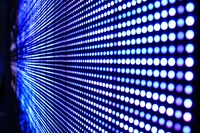Directory Categories
Archives
October 2020
September 2020
August 2020
June 2020
January 2020
May 2018
March 2018
December 2017
November 2017
October 2017
September 2017
July 2017
June 2017
May 2017
April 2017
March 2017
February 2017
January 2017
December 2016
November 2016
October 2016
Sponsored Links
 LEDs have been steadily growing in popularity over the past few years; here are some of the top advantages of LED lighting technology. More and more home, and business owners are choosing to upgrade their lighting with LED rope lights. Energy Efficiency LEDs generally consume very low amounts of power. The statistics to look for when comparing the energy efficiency of different lighting solutions are called by one of two terms: luminous efficacy or useful lumens. These two items essentially describe the amount of light emitted per unit of power (watts) consumed by the bulb. In our experience most LED lighting retrofit projects result in a 60-75% improvement in the overall energy efficiency of the facility’s lighting. Depending on the existing lights and the particular LEDs installed, the savings could be more than 90%. Improved Safety Safety is perhaps the most often overlooked advantage when it comes to LED lighting. The number one hazard when it comes to lighting is the emission of heat. LEDs emit almost no forward heat while traditional bulbs like incandescents convert more than 90% of the total energy used to power them directly into heat. That means only 10% of the energy powering incandescent lights is actually used for light (which also makes them extremely inefficient compared to LEDs). Additionally, because LEDs consume less power they can operate effectively on low-voltage electrical systems. These are generally much safer in the event that something goes wrong. Directional Emissions LED technology emits light for only 180 degrees. Every other type of light emits light 360 degrees around the source. 360 degree emissions necessitate accessory devices to reflect and/or redirect the light. This drives up the costs for the system in general and inevitably results in losses meaning that the device is necessarily less efficient than it otherwise would be. Consider a light that emits light into the ceiling - that is your standard bulb. The problem is that you’re trying to illuminate the room, not the ceiling. LEDs solve this problem completely and give the savings back in terms of the system’s overall energy efficiency. Dimming Capability LEDs are able to operate at virtually any percentage of their rated power (0 to 100%). Of note, they do require hardware specific to LED technology in order to dim (meaning you cannot use the dimming equipment for an incandescent bulb or other traditional lighting technology). A positive of operating LEDs at less than full power is that they get more efficient as the power is reduced. This also increases the total lifespan of the light itself. Both of those advantages are absent with technologies like metal halides that actually get less efficient at lower power and in many cases cannot be dimmed at all. Light Lifespan Easily the most significant advantage of LEDs when compared to traditional lighting solutions is the long lifespan. The average LED lasts 50,000 operating hours to 100,000 operating hours or more. That is 2-4 times as long as most fluorescent, metal halide, and even sodium vapor lights. It is more than 40 times as long as the average incandescent bulb. Less frequent replacement means two big things: lower maintenance costs in terms of labor and lower costs for replacement parts (because the bulbs simply do not fail for a long time). |
Sponsored Links

LED Illuminations are a major global distributor of high quality LED products, including LED Rope Lights and LED Strips. Customer-focused and knowledgable in all aspects of LED Lighting, LED Illuminations can confidently give you the best advice on the LED Lighting product which is right for your project.
